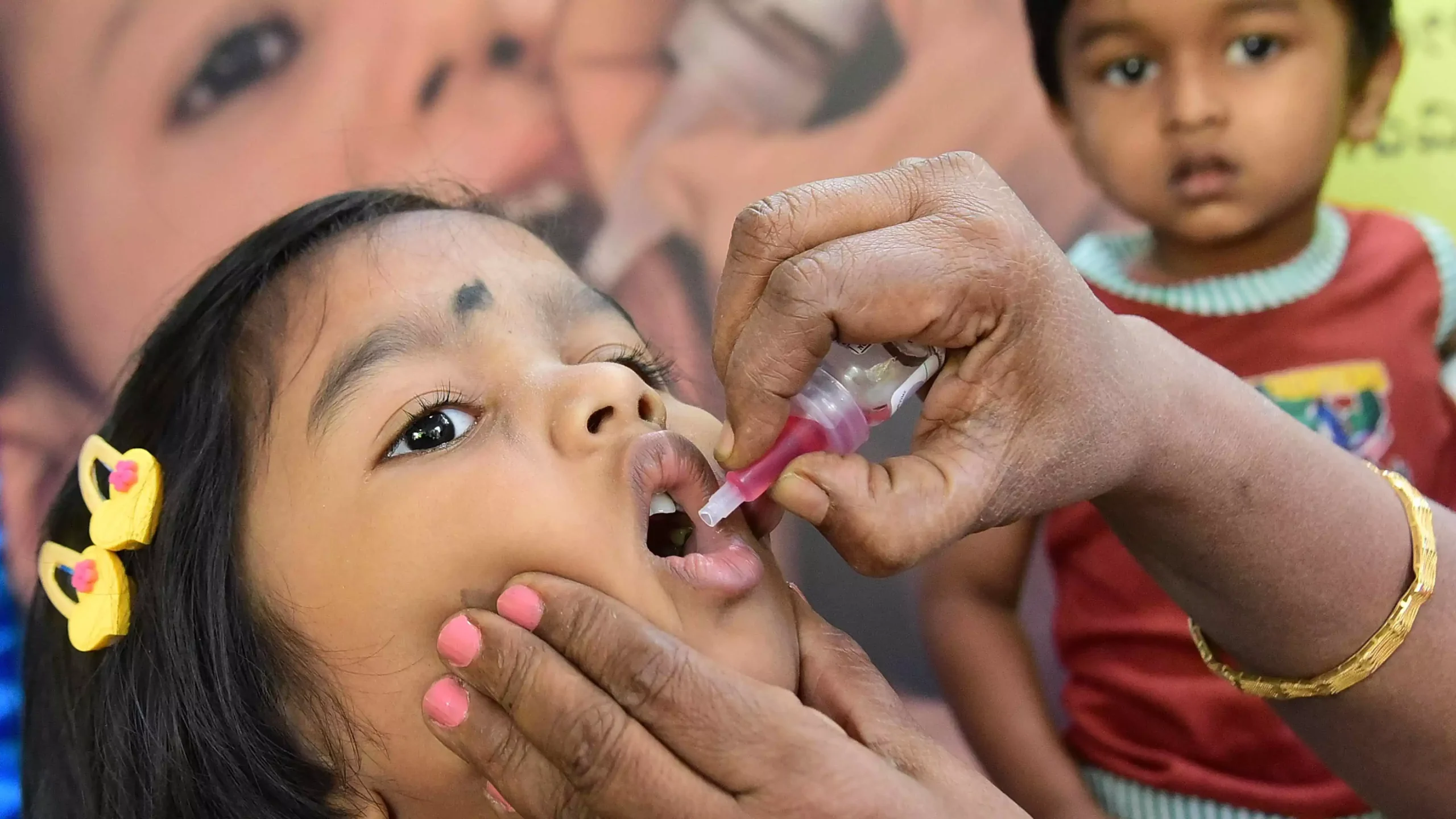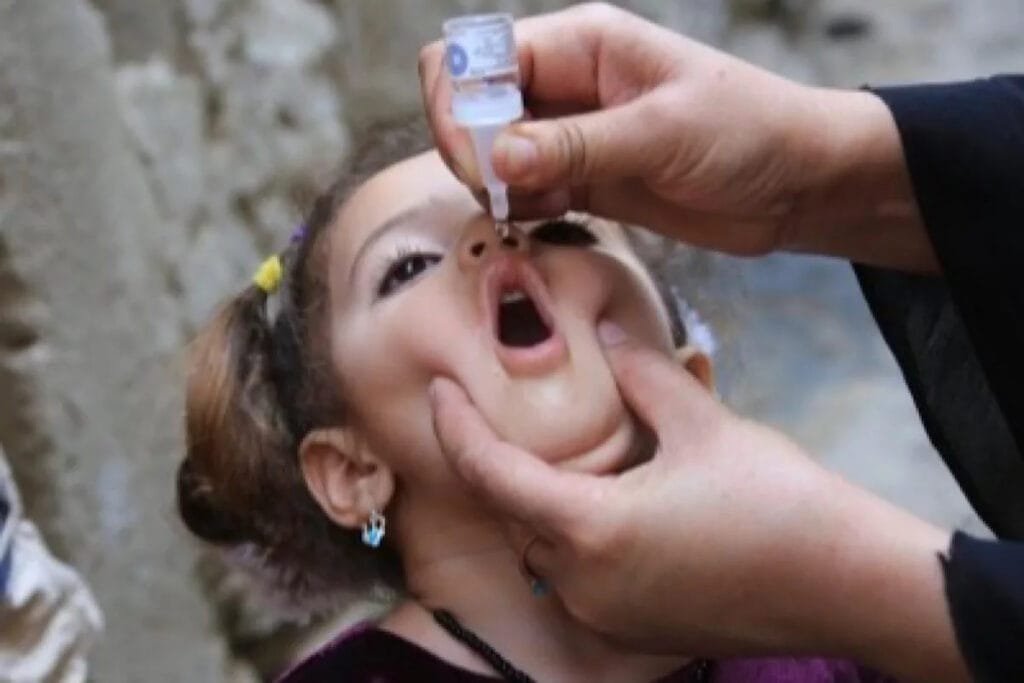Pakistan Reports New Wild Poliovirus Case in Sindh

Numerous new instances of wild poliovirus type 1 (WPV1) were recorded in Pakistan in February 2025, underscoring the continued difficulties in eliminating the illness. On February 22, a case was confirmed in Sindh province’s Larkana district, making it the third case of the year countrywide and the second in Sindh. The number of cases in 2025 increased to five when two more were confirmed on February 28: one in Punjab’s Mandi Bahauddin district and another in Sindh’s Qambar district.
In Pakistan, one of the few nations where the virus is still widespread, these developments highlight the ongoing threat posed by polio. New cases show that more has to be done in spite of massive immunization initiatives, such as a national campaign to vaccinate more than 45 million youngsters in early February. Eradication efforts are still being hampered by issues like vaccine hesitancy, disinformation, and security risks to medical personnel.
Table of Contents
Overview of the New Polio Case
Pakistan announced several new cases of wild poliovirus type 1 (WPV1) in February 2025, underscoring the continued difficulties in curing the illness. The second case in Sindh and the third nationwide for the year was confirmed on February 22 in the Larkana area of Sindh province. Two more cases were later recorded on February 28 in Punjab’s Mandi Bahauddin district and Sindh’s Qambar district, increasing the total to five cases in 2025.
What is the current status of polio in Pakistan?
Six cases of wild poliovirus type 1 (WPV1) have been documented in Pakistan as of April 2025, and environmental surveillance has found 24 samples that tested positive for WPV1 in various places. In response, the government is stepping up vaccine efforts. To stop the virus’s spread, nationwide immunization campaigns are scheduled for April and May.
Where and How the Virus Was Detected?
On February 22, 2025, the most recent case of wild poliovirus was discovered in Larkana, Sindh. Testing at the Regional Reference Laboratory of the National Institutes of Health verified the virus. Furthermore, 24 environmental samples that tested positive for poliovirus were reported from several regions, including Sindh, Punjab, Balochistan, Khyber Pakhtunkhwa, and Islamabad.
Government and Health Authorities Response
With statewide vaccination programs planned for April and May 2025, the Pakistani government and health officials have stepped up their efforts in response to the recent polio infections. In the first phase of the 2025 campaign, more than 45 million children received vaccinations, and the government is concentrating on high-risk areas. To guarantee greater vaccination coverage and lessen disinformation, authorities are also stepping up security measures for polio teams and launching public awareness campaigns.
Polio Vaccination Efforts in Pakistan
With the goal of immunizing more than 45 million children by 2025, Pakistan’s Polio Eradication Program has been running extensive vaccination campaigns. Afghanistan is the only other nation where polio is still endemic, therefore despite advancements, the nation still confronts difficulties. International partners are supporting the efforts; Japan has committed to providing a $3.1 million grant for vaccine doses to help fund the immunization campaigns.
Challenges in Eradicating Polio
Security risks to medical personnel are one of the main obstacles to Pakistan’s polio eradication efforts, which could cause delays or missed immunization sessions. Children’s low immunity and vaccine reluctance are also influenced by socioeconomic and cultural barriers in high-risk locations. Furthermore, uneven campaign quality causes youngsters to be missed, which impedes advancement. Authorities are strengthening security measures, working with community leaders to foster trust, and increasing the efficacy of vaccination campaigns in order to overcome these obstacles.
When was the last wild case of polio?
On January 22, 2025 the district of Dera Ismail Khan in Khyber Pakhtunkhwa verified the country’s most recent incidence of wild poliovirus type 1 (WPV1). The most recent WPV1 incidence was recorded in Tank district of the same province on November 18, 2024.
Global and Regional Impact of the Case
There are important regional and worldwide ramifications to the recent discovery of wild poliovirus type 1 (WPV1) cases in Pakistan. The only two nations where wild poliovirus is still endemic are Pakistan and Afghanistan. If the virus is not eradicated in these areas, there is a chance that it will travel internationally and cause epidemics in nations that do not have polio. Within ten years, the World Health Organization (WHO) has warned that if transmission in these regions continues, there could be up to 200,000 new cases worldwide. In order to lessen this threat to world health, the international community is still giving Pakistan’s polio eradication operations top priority.
Next Steps to Prevent Further Spread
Pakistan is stepping up statewide immunization campaigns to vaccinate children under five in order to stop the poliovirus from spreading further particularly in high-risk areas. Increased surveillance is in place to swiftly identify and address any new occurrences. In order to combat vaccine reluctance and disinformation authorities are also interacting with community leaders. Pakistan and Afghanistan are also working together to coordinate vaccination campaigns for populations that are on the move. The goal of these combined tactics is to eradicate polio and stop further outbreaks.

Conclusion
Pakistan is still working to eradicate polio but community involvement improved surveillance and continued vaccination campaigns are essential to halting the virus’s spread. Even while recent incidents show how dangerous polio is concerted efforts such as cross-border vaccination and improved health programs give hope for a future devoid of the disease. Pakistan wants to eradicate polio and protect future generations from this avoidable illness with a continuous commitment from the government medical institutions and international partners.






